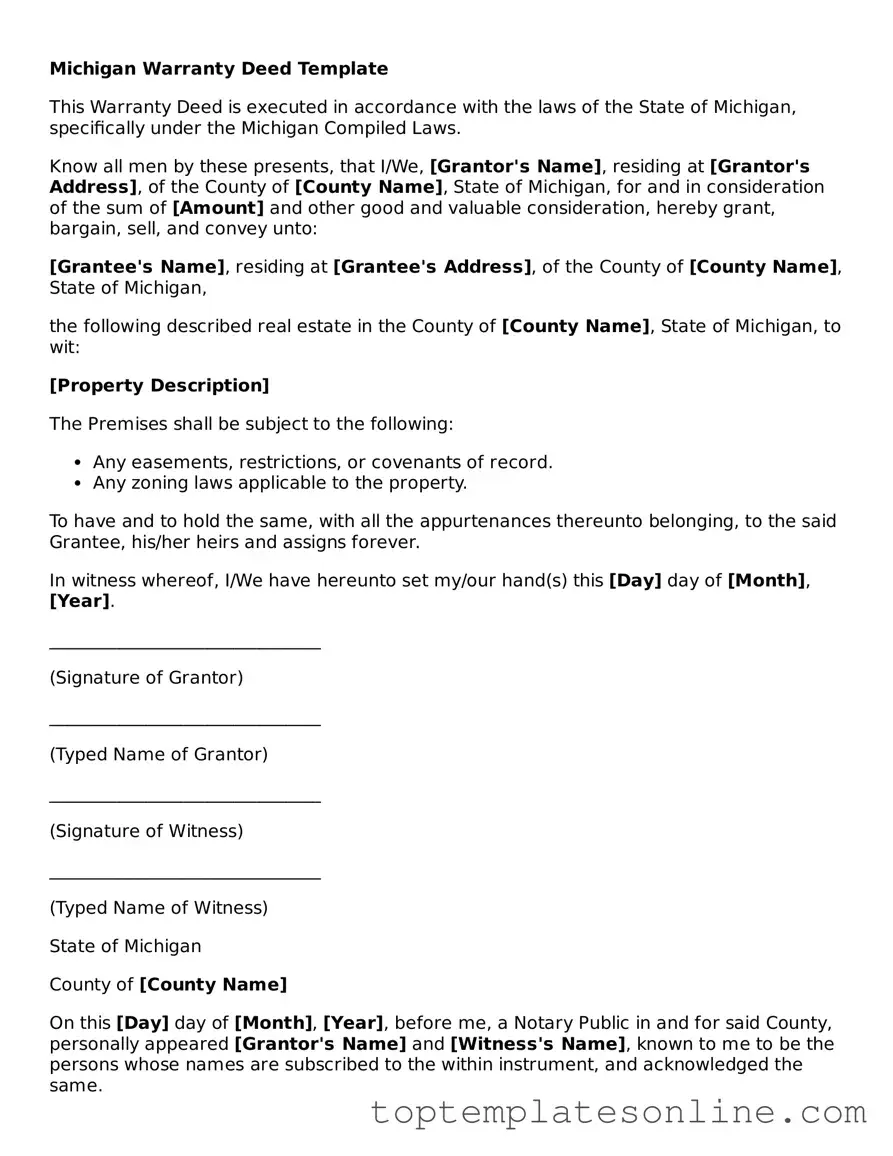Blank Deed Template for Michigan State
The Michigan Deed form is a legal document used to transfer ownership of real property from one party to another. This form serves as a crucial instrument in real estate transactions, ensuring that the transfer is documented and legally recognized. Understanding its components and requirements is essential for both buyers and sellers in Michigan.
Customize Deed Here
